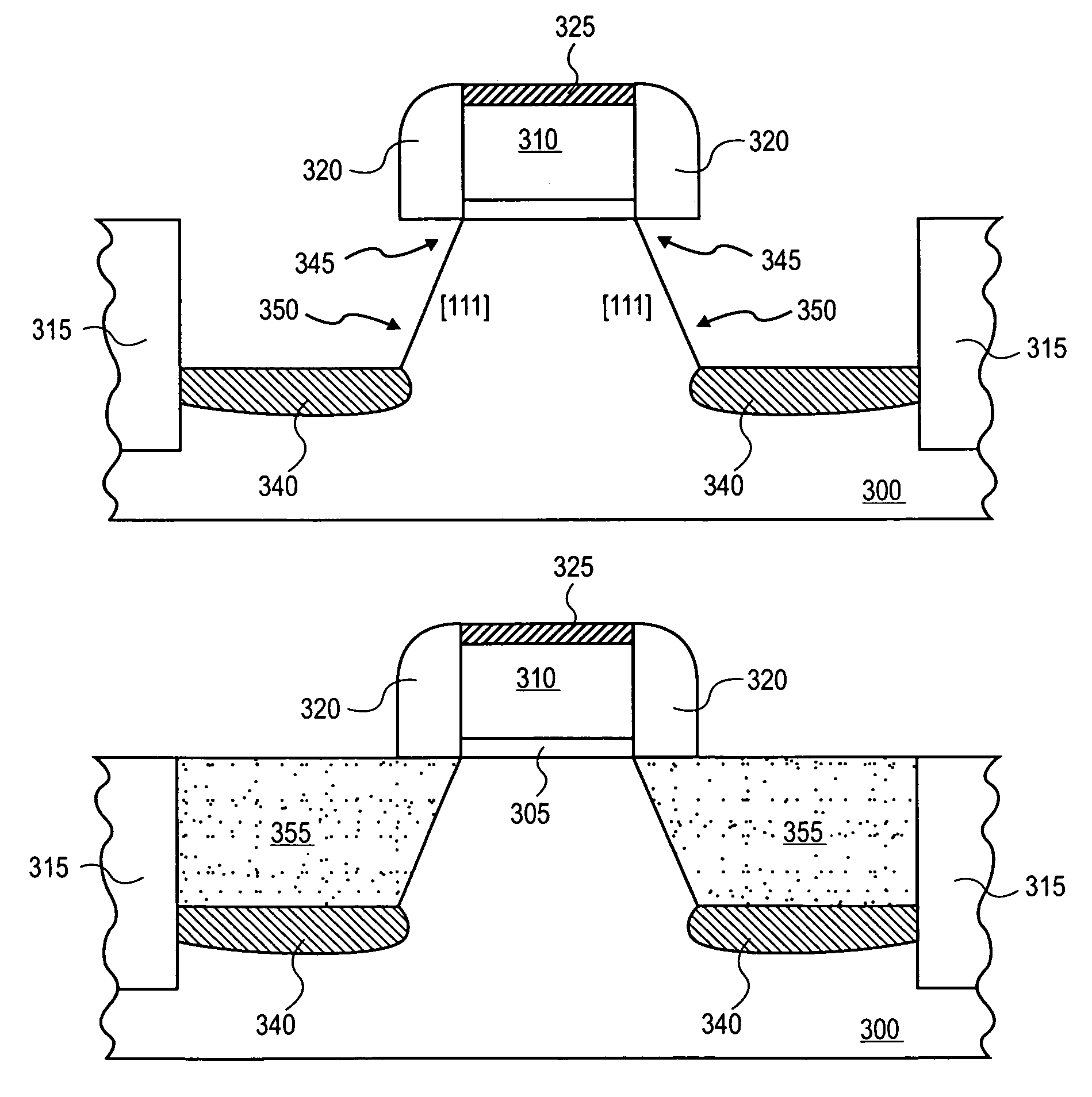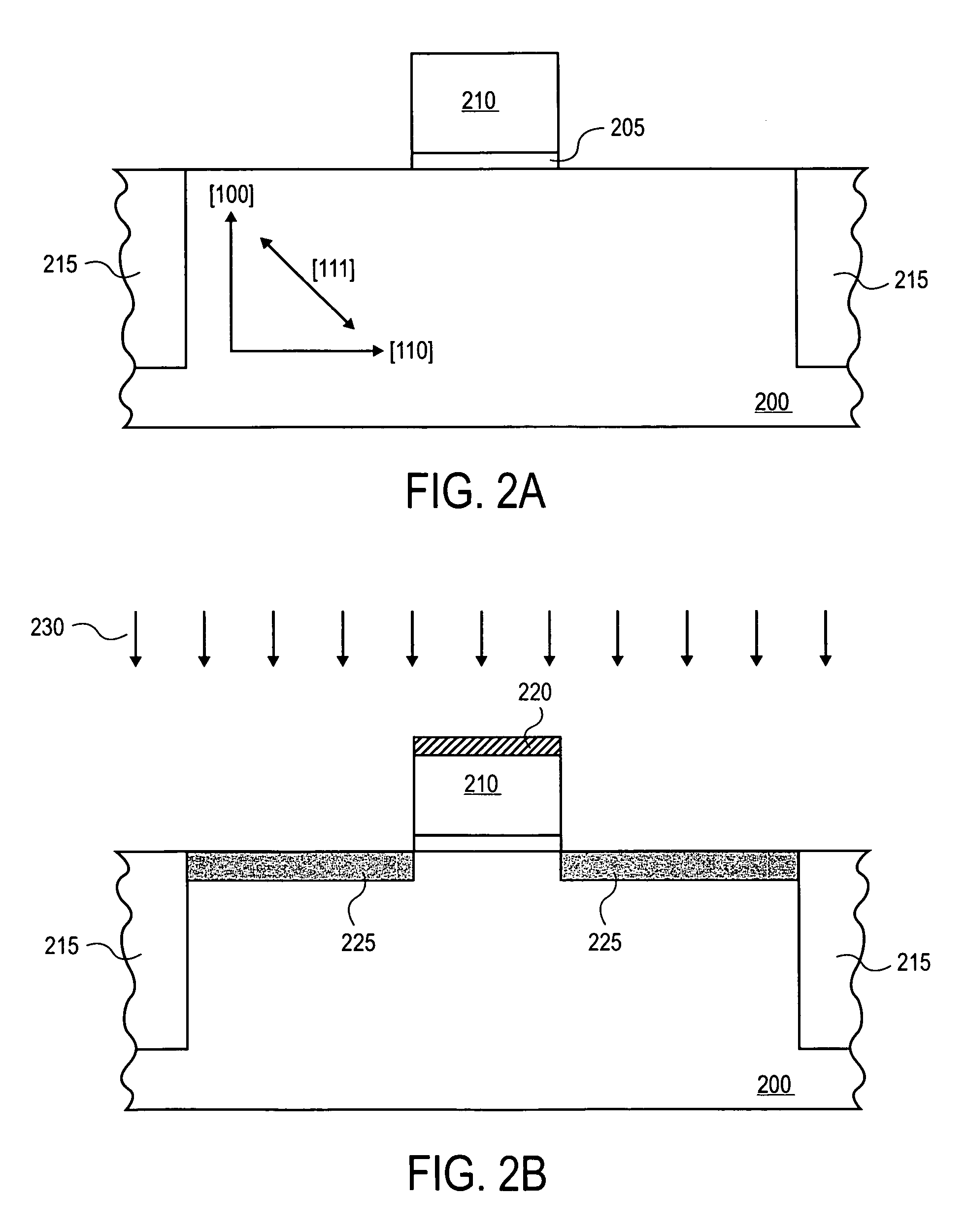Amorphous etch stop for the anisotropic etching of substrates
a technology of anisotropic etching and amorphous etch stop, which is applied in the direction of basic electric elements, electrical apparatus, semiconductor devices, etc., can solve the problems of inconsistent device structure formation on a substrate, unsatisfactory dummy structure, and electrical interferen
- Summary
- Abstract
- Description
- Claims
- Application Information
AI Technical Summary
Benefits of technology
Problems solved by technology
Method used
Image
Examples
Embodiment Construction
[0012]Described herein are methods and devices employing an amorphous etch stop layer formed by implanting elements that are electrically neutral within a substrate. In the following description numerous specific details are set forth. One of ordinary skill in the art, however, will appreciate that these specific details are not necessary to practice embodiments of the invention. While certain exemplary embodiments of the invention are described and shown in the accompanying drawings, it is to be understood that such embodiments are merely illustrative and not restrictive of the current invention, and that this invention is not restricted to the specific constructions and arrangements shown and described because modifications may occur to those ordinarily skilled in the art. In other instances, well known semiconductor fabrication processes, techniques, materials, equipment, etc., have not been set forth in particular detail in order to not unnecessarily obscure embodiments of the p...
PUM
| Property | Measurement | Unit |
|---|---|---|
| depth | aaaaa | aaaaa |
| depth | aaaaa | aaaaa |
| depth | aaaaa | aaaaa |
Abstract
Description
Claims
Application Information
 Login to View More
Login to View More - R&D
- Intellectual Property
- Life Sciences
- Materials
- Tech Scout
- Unparalleled Data Quality
- Higher Quality Content
- 60% Fewer Hallucinations
Browse by: Latest US Patents, China's latest patents, Technical Efficacy Thesaurus, Application Domain, Technology Topic, Popular Technical Reports.
© 2025 PatSnap. All rights reserved.Legal|Privacy policy|Modern Slavery Act Transparency Statement|Sitemap|About US| Contact US: help@patsnap.com



